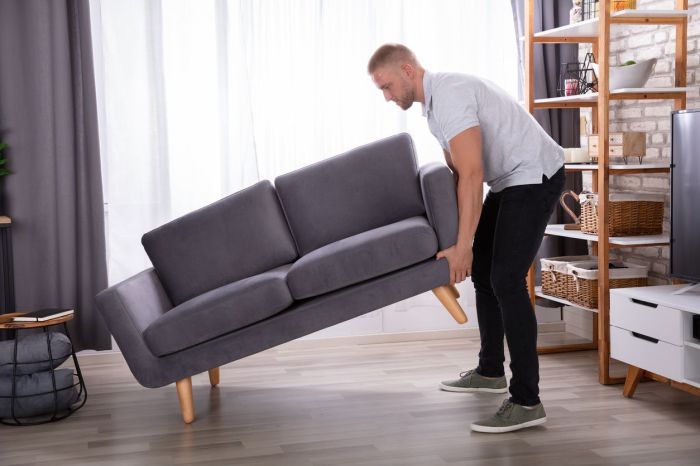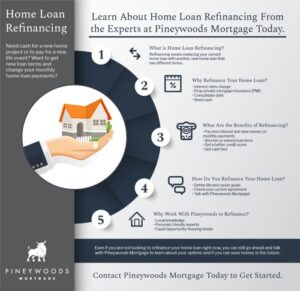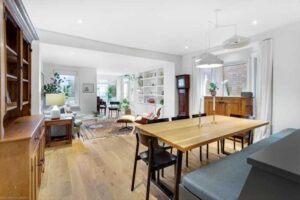
Home staging tips to sell faster is all about presenting your property in the best light possible, making it irresistible to potential buyers. It involves a blend of art and strategy, turning your home into a welcoming space that allows buyers to envision themselves living there.
In this guide, we’ll explore the fundamentals of home staging, share effective strategies, and emphasize the importance of collaboration with real estate professionals. Whether you’re new to staging or looking to refine your approach, these insights will help you achieve a quicker sale.
Home Staging Basics
Home staging is the process of preparing a residential property for sale in the real estate market. The primary goal is to make the home appealing to potential buyers, thereby facilitating a quicker sale and potentially higher offers. It involves optimizing the property’s interior and exterior to showcase its best features and minimize its flaws.Effective home staging is not merely about decorating; it’s a strategic approach that impacts buyers’ perceptions and emotions.
Key elements of effective home staging include decluttering, depersonalizing, cleaning, and enhancing curb appeal. Each component plays a vital role in creating an inviting atmosphere that allows prospective buyers to envision themselves living in the space.
Key Elements of Effective Home Staging
When it comes to staging a home, several critical elements should be considered to ensure the property stands out in the market. These components work together to create a cohesive environment that highlights the home’s strengths.
- Decluttering: Removing excess items, furniture, and personal belongings is essential. A tidy space makes the home feel larger and more welcoming. Homeowners should aim for a clean slate that allows buyers to see the potential of each room.
- Depersonalizing: Buyers need to envision themselves in the home. This means removing personal photos, memorabilia, and any distinctive decor that may distract them from the property itself.
- Cleaning: A deep clean is non-negotiable. This includes washing windows, dusting surfaces, and ensuring that carpets and floors are spotless. A clean home resonates with buyers and creates a positive first impression.
- Enhancing Curb Appeal: The exterior of the home is the first thing buyers see. Fresh paint, well-maintained landscaping, and inviting entryways can significantly enhance appeal. Simple upgrades, such as new house numbers or outdoor lighting, can make a big impact.
- Neutralizing Colors: While bold colors can reflect personal style, neutral tones are more universally appealing. Painting walls in soft, neutral shades can help create a blank canvas that buyers can easily personalize.
Checklist for Homeowners Preparing to Stage Their Homes
Creating a checklist can help homeowners manage the staging process efficiently. A well-structured list ensures that no detail is overlooked, ultimately leading to a more attractive property.
- Declutter each room, focusing on surfaces and storage areas.
- Remove personal items and family photos.
- Deep clean all areas, including bathrooms and kitchens.
- Repair any minor issues, such as leaky faucets or squeaky doors.
- Paint walls in neutral colors, where necessary.
- Rearrange furniture to optimize flow and showcase space.
- Enhance lighting by using higher wattage bulbs and opening curtains.
- Update or clean outdoor spaces, including yards and patios.
- Consider hiring a professional stager for expert advice.
“Effective home staging can lead to faster sales and potentially higher offers, making it a crucial step in the selling process.”
Strategies for Effective Home Staging

Home staging is not just about beautifying a space; it involves strategic planning to create an inviting atmosphere that appeals to potential buyers. By implementing effective strategies, sellers can enhance the perceived value of their homes, leading to quicker sales and potentially higher offers. Below are some essential strategies for effective home staging that will prepare your home for the market.
Decluttering and Depersonalizing
A clutter-free and depersonalized environment enables buyers to envision themselves living in the space. This process involves removing excess items and personal decor that may distract or deter potential buyers. Here are some methods for achieving this:
- Remove personal items: Family photos, mementos, and personalized decor can make it difficult for buyers to imagine their lives in the home. Replace these items with neutral decor.
- Clear surfaces: Ensure countertops, tables, and shelves are free from clutter. This creates a sense of spaciousness and cleanliness.
- Organize closets and storage: An organized closet conveys ample storage space. Buyers often look inside closets, so keep them neat and orderly.
- Reduce furniture: Too much furniture can make spaces feel cramped. Remove unnecessary pieces to allow for better flow and visual openness.
Color Psychology in Home Staging
The impact of color on buyer perception is profound, influencing emotions and decisions. Utilizing color psychology in home staging can enhance the appeal of your home significantly. Here are key aspects to consider:
- Neutral palettes: Soft, neutral colors like beige, gray, and white create a calming atmosphere, allowing buyers to focus on the home’s features rather than bold colors.
- Accent colors: Incorporating subtle accent colors can add character and warmth. Consider using blues for tranquility or greens for an organic feel, which can also evoke feelings of home.
- Consistency: Ensure that color schemes throughout the home are cohesive. A unified color palette can create a sense of flow and spaciousness.
Furniture Arrangement for Space Perception
The way furniture is arranged can significantly affect how spacious a home feels. Thoughtful furniture placement can enhance functionality and encourage movement through the space. Follow these guidelines for effective furniture arrangement:
- Define areas: Use furniture to define different areas within open spaces. For example, a sofa can create a distinct living area, while a dining table delineates the dining zone.
- Leave pathways: Ensure there is ample room for walkways between furniture pieces. Ideally, aim for at least 18 inches of space to facilitate easy traffic flow.
- Scale and size: Choose appropriately sized furniture for the space. Oversized furniture can make a room feel cramped, while smaller pieces may create an airy feel.
- Focus on focal points: Arrange furniture to highlight focal points in the room, such as fireplaces, windows, or built-in shelving. This draws attention to the room’s features.
The Role of Real Estate Professionals in Home Staging
Real estate professionals play a crucial role in the home staging process, enhancing the appeal of a property to potential buyers. Their expertise not only streamlines the staging efforts but also ensures that the home resonates with the target market. Collaborating effectively with realtors can significantly impact the speed and success of a home sale.Realtors bring valuable insights into the local real estate market, helping homeowners understand what buyers are looking for.
They can provide guidance on key areas to focus on during staging, such as emphasizing space, light, and functionality. By leveraging their market knowledge, realtors can recommend improvements that yield the best return on investment, guiding homeowners on whether to undertake small repairs or larger renovations.
Collaboration Strategies Between Homeowners and Realtors
Successful home staging relies on a strong partnership between homeowners and real estate agents. Here are some strategies to foster this collaboration:
- Regular Communication: Maintain open lines of communication to discuss progress, preferences, and any adjustments needed during the staging process.
- Setting Clear Goals: Define specific objectives for the home sale, including target timelines and desired price points, to ensure everyone is aligned.
- Utilizing Professional Staging Services: Realtors often have connections with professional stagers. Collaborating with a stager can enhance the home’s visual appeal and buyer perception.
- Feedback Loop: After each showing, gather feedback from the realtor to understand buyer reactions and make necessary adjustments to the staging.
- Staying Informed: Keep up with market trends and buyer preferences by leveraging the realtor’s insights, adjusting staging accordingly for maximum impact.
Comparing Professional Home Staging to DIY Staging
The effectiveness of professional home staging versus DIY staging is an important consideration for homeowners. Professional staging typically yields higher returns and faster sales due to the expertise involved. Here are some reasons why professional staging may outperform DIY approaches:
- Expertise and Experience: Professional stagers understand design principles and buyer psychology, creating spaces that appeal to potential buyers.
- Access to Resources: Stagers have access to furniture, decor, and accessories that can significantly enhance a home’s appeal, which may not be available for DIYers.
- Neutral Perspective: Professionals can provide an unbiased view of a home’s strengths and weaknesses, allowing for strategic staging decisions that maximize appeal.
- Time Efficiency: Utilizing a professional saves time for homeowners, allowing them to focus on other aspects of the selling process.
- Proven Results: Statistics indicate that staged homes sell 73% faster on average than non-staged homes, showcasing the effectiveness of professional staging.
Investing in professional staging can lead to a quicker sale and often a higher sale price, making it a worthwhile consideration for homeowners.
Last Point

In summary, effective home staging is a vital step in the selling process that can significantly reduce the time your property sits on the market. By implementing the tips discussed and working closely with real estate professionals, you can create an inviting atmosphere that resonates with buyers, ultimately leading to a faster and more profitable sale.
Answers to Common Questions
What is home staging?
Home staging is the process of preparing a home for sale by enhancing its appeal to potential buyers through decor and organization.
How much does home staging cost?
Costs can vary widely, ranging from a few hundred dollars for a consultation to several thousand for full staging services.
Is DIY staging effective?
Yes, DIY staging can be effective if done thoughtfully, but professional staging often yields better results by leveraging expert knowledge.
How long does home staging take?
The duration can vary based on the size of the home and the extent of staging, but it usually takes a few days to complete.
Does staging really help sell a home faster?
Yes, studies show that staged homes typically sell faster and for a higher price compared to unstaged homes.





